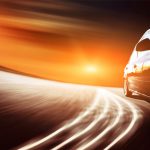As emissions legislation continues to dictate the pace of change in new vehicle technologies, Melett ponders whether we’ve reached the end of the road for traditional engine designs.
Ten years ago who would have thought the naturally aspirated engine would be considered as a niche market? Today, turbocharging is the dominant technology and it is now common place for diesel engines to contain one, two or even three turbochargers. Even the advocates for natural aspiration, such as Ferrari, have had to admit defeat and adopt turbocharging into their new supercar designs.
So why have VMs lost their passion for naturally aspirated engines? The key driver behind the decline of
natural aspiration stems from the car industry in Europe and the quest for greater fuel efficiency and a reduction in harmful emissions. In 1992 the EU signed the Koyoto Protocol, which insisted that the world pull emission levels back by 8% by 2012.
Fast-forward to 2015 and the introduction of Euro 6 legislation, which defines the acceptable limits for exhaust emissions of new vehicles sold in EU member states. To meet these stringent regulations, a
turbo remains the most efficient solution to reduce emissions without sacrificing performance. A naturally aspirated engine is renowned for its capabilities in terms of power and high revs, but with the massive disadvantage of high fuel consumption, which does not comply with modern emissions legislation.
Compared with a naturally aspirated engine of identical power output, the power to-weight ratio, i.e. kilowatt (power output)/ kilograms (engine weight), of a turbocharged engine is much better than that of the naturally aspirated engine, with the added benefit of weighing less.
This reduces the overall mass of a vehicle and makes it easier for engineers to develop more compact engines. In addition, the cost and simplicity of engineering turbocharged performance are huge benefits to VMs, whereas a naturally aspirated engine can be extremely expensive to make.
With the continuing pressure to reduce CO₂ emissions and fuel consumption, the turbo has proved to be the most efficient boosting device and therefore, unless legislation dramatically changes over the coming years, the naturally aspirated engine looks set to remain out of favour.
Electric turbocharging
One major development that we’ve seen is the use of electric boosters to maintain high response rates at low engine speeds. In principle, an electric ‘booster’ provides power to a compressor that enhances the
engine’s performance without relying on exhaust gases. Still in its infancy, Audi is one of the first to develop a 2.5L TT sports car that includes both a turbocharged five cylinder gasoline engine and an electric booster.
An electrically powered compressor is claimed to provide significant advantages. It rapidly reaches maximum speed and continues to boost charge pressure when a small amount of drive energy is left in the exhaust gas for the conventional turbocharger. This advancement makes it possible to design the conventional turbocharger for high engine power – the e-booster maintains response at low engine speeds.
Electric boosting provides opportunities to deliver torque to the drive train, enabling the performance people expect, whilst saving fuel. Industry sources suggest that an electric booster can respond instantly (within 250 milliseconds) and can reduce fuel consumption by 10%.
Although this technology is still in its infancy, electrification could be the next stage of high performance vehicle development for both diesel and gasoline engines.











